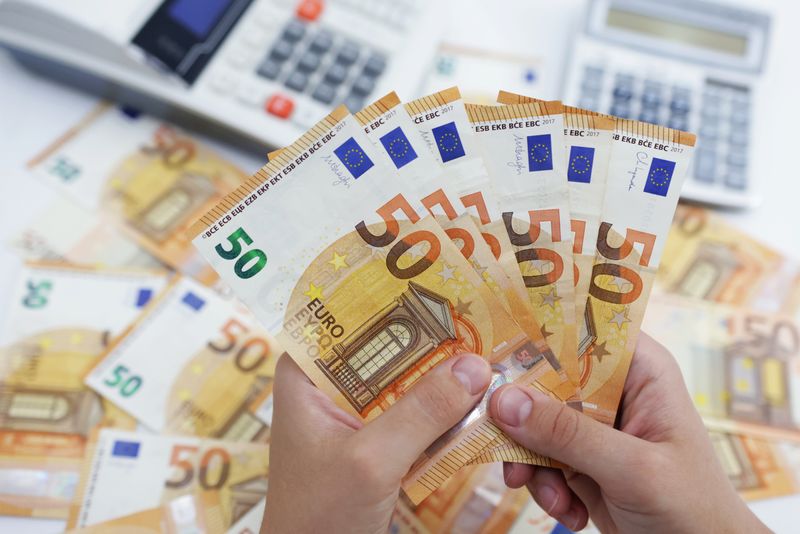Forex
Election concerns in France give euro worst week in two months

By Karen Brettell
(Reuters) -The euro was on track for its biggest weekly fall against the dollar in two months on Friday on concerns that a new government will worsen France’s fiscal situation as a snap parliamentary election approaches.
The yen hit a six-week low against the dollar, before rebounding, after the Bank of Japan (BOJ) surprised markets with a dovish monetary policy update.
French markets saw the biggest weekly jump since 2011 in the premium that investors demand to hold French government debt and bank stocks tumbled on Friday.
The concern is “the instability combined with the already existing pressure on the budget,” said Brad Bechtel, global head of FX at Jefferies in New York, adding that “any time spreads widen in Europe, the euro suffers.”
French Finance Minister Bruno Le Maire said on Friday that the euro zone’s second-biggest economy was at risk of a financial crisis if either the far right or left won because of their heavy spending plans.
Marine Le Pen’s eurosceptic National Rally (RN) is leading in opinion polls.
“On both ends of the French political spectrum, the parties that are campaigning are fiscally expansionist parties,” said Karl Schamotta, chief market strategist at Corpay in Toronto. “Markets are mostly responding to additional fiscal stress.”
The euro is on track for a 0.95% weekly fall – its biggest since April – and was last down 0.34% on the day at $1.0699. It got as low as $1.06678, the lowest since May 1.
The euro’s weakness has helped drive the dollar higher. The – which tracks the currency against six peers – was up 0.3% at 105.55 and reached 105.80, the highest since May 2.
“We’re seeing flows into the U.S. on both ends of the spectrum – from the safe-haven side as well as on the yield-seeking side – given that U.S. yields remain well above those available elsewhere,” said Schamotta.
The European Central Bank and Bank of Canada have begun cutting rates while the Federal Reserve holds steady.
The U.S. central bank adopted a more hawkish than expected tone at this week’s meeting when Fed officials projected only one rate cut this year and pushed out the start of rate cuts to perhaps as late as December.
But for now, “the Fed is sort of taking a backseat when it comes to the dollar,” Bechtel said. Elections in emerging markets and Europe are instead driving moves, he said.
A survey on Friday showed that U.S. consumer sentiment deteriorated in June as households worried about inflation and incomes.
Other data showed that U.S. import prices unexpectedly fell in May amid lower prices for energy products, providing another boost to the domestic inflation outlook.
Softer than expected consumer and producer price inflation for May this week has helped bolster hopes that inflation will continue to ease closer to the Fed’s 2% annual target and make an interest rate cut possible as soon as September.
Chicago Fed President Austan Goolsbee on Friday said he felt “relief” after the consumer inflation data, but added there needs to be more progress.
The yen fell after the BOJ’s decision to hold interest rates and restart bond buying.
In a surprise for markets, the BOJ said it would continue to buy government bonds at the current pace for now and lay out details of its tapering plan at its July policy meeting.
BOJ governor Kazuo Ueda said the central bank was “paying close attention” to the impact of the weak yen on inflation, and added that a rate hike in July was a possibility, depending on economic data.
The dollar was last up 0.17% at 157.29 , after earlier reaching 158.26, the highest since April 29.

The yen’s decline to a 34-year low of 160.245 per dollar at the end of April triggered several rounds of official Japanese intervention totaling 9.79 trillion yen ($62 billion).
In cryptocurrencies, bitcoin fell 1.84% to $65,453.

 Forex3 years ago
Forex3 years agoForex Today: the dollar is gaining strength amid gloomy sentiment at the start of the Fed’s week

 Forex3 years ago
Forex3 years agoUnbiased review of Pocket Option broker

 Forex3 years ago
Forex3 years agoDollar to pound sterling exchange rate today: Pound plummeted to its lowest since 1985

 Forex3 years ago
Forex3 years agoHow is the Australian dollar doing today?

 Cryptocurrency3 years ago
Cryptocurrency3 years agoWhat happened in the crypto market – current events today

 World3 years ago
World3 years agoWhy are modern video games an art form?

 Commodities3 years ago
Commodities3 years agoCopper continues to fall in price on expectations of lower demand in China

 Economy3 years ago
Economy3 years agoCrude oil tankers double in price due to EU anti-Russian sanctions


























